#Misereor
Explore tagged Tumblr posts
Text
...L❤️ve this very much..
.
271 notes
·
View notes
Link
0 notes
Text
“Por la tierra” es una serie documental que recorre cuatro casos testigos del impacto del modelo transgénico en Argentina, Paraguay, Bolivia y Brasil; y la organización social para enfrentarlo. El material audiovisual surge a partir de la investigación y demanda presentada contra Bayer por parte de las organizaciones regionales CELS, Terra de Direitos, BASE-IS y Fundación TIERRA, y las alemanas ECCHR y Misereor. La serie documental Por la tierra. Agronegocios y derechos humanos en América del Sur muestra, en cuatro episodios, cómo el avance de los monocultivos y el uso de agrotóxicos afecta el derecho a la salud, al acceso a la tierra y a un ambiente sano de distintas comunidades de Argentina, Bolivia, Paraguay y Brasil. Dirigidos por la realizadora Irene Kuten, los capítulos están basados en una investigación realizada por el Centro de Estudios Legales y Sociales (CELS, Argentina), Terra de Direitos (Brasil), BASE-IS (Paraguay), Fundación TIERRA (Bolivia), Misereor y el Centro Europeo de Derechos Constitucionales y Humanos (Alemania), que denunciaron a Bayer-Monsanto ante la Organización para la Cooperación y el Desarrollo Económico (OCDE) en abril pasado, sin que aún se hayan recibido respuestas al respecto. El documental tiene como objetivo visibilizar la contaminación, la deforestación y los desalojos que sufren las comunidades campesinas e indígenas de la región. También señala la complicidad de los Estados y su connivencia con el agronegocio en sus distintos niveles. La serie no se queda en la denuncia del modelo sino que también muestra los procesos de organización y resistencia de las comunidades campesinas e indígenas. “La agroecología es una disputa permanente con el agronegocio. Una disputa que precisa de reforma agraria, de políticas públicas y de que las personas cambien su comportamiento en sentido cultural”, afirma en el documental Darci Frigo, integrante de Terra de Direitos. La denuncia llevada adelante por las organizaciones fue presentada en Alemania, donde Bayer-Monsanto tiene radicada su casa matriz, encargada de generar las políticas y prácticas de protección de los derechos humanos y el ambiente en relación a sus productos. En ese país, la Ley de Suministros obliga a las empresas a identificar los riesgos de abusos de los derechos humanos y en el ambiente en la actividad de sus proveedores. «Tenemos que enfrentarnos a un discurso fuerte, con el objetivo de dar con los responsables de toda la cadena productiva. Que la empresa se haga responsable del control de toda esa cadena productiva», advierte Frigo. Argentina, la salud y el caso de Pergamino El eje del episodio sobre Argentina es la afectación a la salud humana. Uno de los testimonios es el de Sabrina Ortíz, quien impulsó una serie de denuncias que devinieron en un fallo histórico para alejar los agrotóxicos de la zona urbana de Pergamino, en la provincia de Buenos Aires. Ella y su familia vivían en el barrio Villa Alicia, lindante con campos de soja. En 2011 empezaron a tener alergias y problemas respiratorios, cada vez que fumigaban en los campos cercanos. Los análisis revelaron que tanto ella como sus hijos tenían altos porcentajes de glifosato y ampa (que es el metabolito del glifosato) en orina. En ese año, perdió su embarazo de cinco meses de gestación. Los médicos le dijeron que se había intoxicado, pero nadie se animó a darle formalmente un diagnóstico. “Me enteré de una nena de 11 años que murió de cáncer por el agua contaminada. Después empezaron a aparecer más casos y después me tocó a mí”, cuenta otra vecina de Pergamino, Gisell, en la serie. Vómitos, diarrea, fiebre, manchas en la piel son algunas de las afectaciones que sufren quienes habitan esa ciudad, en la zona núcleo del agronegocio. En Pergamino, se encontraron entre 18 y 20 sustancias tóxicas en los pozos de agua de red. También detectaron 53 casos de cáncer en un perímetro de ocho manzanas. Ortiz decidió denunciar. Como resultado de esa causa judicial, se llegó a un falló ...

View On WordPress
1 note
·
View note
Text
Die Verhandlungen über die Resolution des deutschen Bundestags begannen gleich nach dem Angriff der Hamas auf Israel am 7. Oktober 2023 - dauerten also mehr als ein Jahr. Der jetzt verabschiedete Antrag trägt den Titel: "Nie wieder ist jetzt - Jüdisches Leben in Deutschland schützen, bewahren und stärken." Was selbstverständlich klingt, wird ausgerechnet von einer Reihe israelischer Menschenrechtsorganisationen kritisiert.
Yudith Oppenheimer ist Direktorin von Ir Amim, einer Organisation, die sich mit der Lage in Jerusalem beschäftigt - und die sich für eine Zwei-Staaten-Lösung einsetzt, also auch für einen palästinensischen Staat.
Ihre Kritik ist grundsätzlich: Die Resolution trage erstens dazu bei, "eine Atmosphäre zu schaffen, in der unsere Arbeit delegitimiert wird", sagt Oppenheimer. "Und dann hängt es an der deutschen Regierung, wie weit sie das treiben will und wie viel Druck die israelische Regierung macht, Gelder zu kürzen und Menschenrechtsorganisationen zu sanktionieren." Denn die Resolution würde es der israelischen Regierung sehr viel einfacher machen, die Arbeit der Organisationen zu beschränken.
Sie sei sehr dafür, Antisemitismus weltweit, auch in Deutschland, zu bekämpfen. Allerdings habe sie ein Problem mit der Definition von Antisemitismus, die dem geplanten Bundestagsbeschluss zugrunde liegt. Die sogenannte Arbeitsdefinition der International Holocaust Rememberance Alliance legt nämlich einen starken Fokus auf Antisemitismus, der auf Israel bezogen ist. Die Organisationen, die den Brief verfasst haben, schreiben, der Bundestagsbeschluss könnte, indem er diese Definition zur Grundlage macht, gegenüber Organisationen und Personen, die Israel kritisieren, als Instrument der Zensur wirken. Das, so sagen Vertreter dieser Organisationen, passiere bereits in Israel, wo die Regierung von Benjamin Netanyahu Menschenrechtsorganisationen, auch auf palästinensischer Seite, delegitimiert - unter anderem mit dem Vorwurf, ihre Kritik an Israel sei antisemitisch.
In Deutschland soll, so sieht es die Resolution vor, künftig auch die Zusage von Fördermitteln an die Antisemitismus-Definition der International Holocaust Rememberance Alliance geknüpft werden. Das würde auch israelischen NGOs Probleme bereiten, sagt Jessica montell, Direktorin von HaMoked, einer Organisation, die Rechtsbeistand für Palästinenser bietet, die unter israelischer Besatzung leben. "Die Bundesregierung unterstützt Menschenrechtsorganisationen weltweit, auch israelische und palästinensische Menschenrechtsorganisationen. Ich verstehe, dass der Bundestagsbeschluss auch Förderentscheidungen weltweit beeinflussen würde", erklärt montell. Das habe potenziell große Konsequenzen: "Wir würden nicht mehr in der Lage sein, deutsche Fördermittel zu erhalten für die Arbeit einer Menschenrechtsorganisation mit der vorliegenden Beschlussvorlage", sagt montell. Das könnte also auch Fördermittel betreffen, die HaMoked derzeit vom Hilfswerk Misereor aus Deutschland bekommt.
montell verweist zudem darauf, dass auch in Deutschland viele Jüdinnen und Juden leben, die Israel und seine Regierung kritisieren - auch sie könnten von der Beschlussvorlage betroffen sein: Ironischerweise würde die Beschlussvorlage Juden in Deutschland beschränken und zum Schweigen bringen. Anstatt Juden zu schützen und die Diversität jüdischen Lebens in Deutschland, wird hier nur ein spezieller Teil aus dem Spektrum geschützt. Unter dem Vorwand, Juden vor Antisemitismus zu schützen, würden Juden und Israelis in Deutschland eingeschränkt. Oppenheimer hat noch ein ganz anderes Problem: Der Beschluss wurde kurz vor dem 9. November gefasst, dem Tag, an dem Deutschland der Reichspogromnacht gedenkt - und damit an die Ausgrenzung, die Verfolgung und den späteren Massenmord an Juden erinnert. "Meine Eltern wurden in Deutschland geboren und sind in Nazi-Deutschland aufgewachsen. Der 9. November ist ein wichtiger Tag für meine Familie. Mein Großvater wurde am 9. November verhaftet und nach Buchenwald gebracht", sagt Oppenheimer. "Und heute fühle ich, dass meine Stimme durch den Bundestag delegitimiert werden kann. Sagt uns Deutschland jetzt, was eine legitime jüdische Stimme ist und was nicht?" Die israelischen Organisationen fordern den Bundestag dazu auf, eine Resolution zu beschließen, die von demokratischen Prinzipien und liberalen Werten bestimmt ist - und weiterhin die Arbeit der Menschenrechtsorganisationen ermöglicht. Die Antisemitismus-Definition, die dem Entwurf zugrunde liegt, sehen sie aber als ein Instrument, das das Gegenteil erreicht.
0 notes
Text
Misereor – The Social Swipe, Turning Charity into an Action of Hope
Source – campaignsoftheworld.com
Original Title: Das PlaCard
Year: 2015
Award: World Summit Award
Category: Inclusion & Empowerment
Organisation: Misereor
Country: Germany
Imagine a world where the most vulnerable – the poor, the sick, the hungry – have someone in their corner. That’s where Misereor steps in, seeing past differences in gender, religion, or nationality.
Its mission is pure and simple—empowerment. The organization believes everyone deserves a life of dignity, and they walk alongside those struggling to achieve it.
The name, “Misereor” (Latin for ���I have compassion on the crowd”), comes straight from the Bible, echoing Jesus’ words in Mark 8:2. This compassion is the fuel that drives its every action.
Misereor’s name reflects its core value of compassion. It’s the fire that fuels its fight for a more just and equitable world where everyone has the chance to thrive.
The Swipe of Hope
Source – www.dandad.org
Imagine a billboard that doesn’t just beg but lets you be the hero. This wasn’t your average advertisement. It was the world’s first to accept credit card donations, making giving as easy as a swipe.
Here’s how “The Social Swipe” worked:
Swipe for Change:
You saw a heartbreaking image – a child’s bound hands or perhaps a loaf of bread representing a family’s daily meal in Peru.
The Power is in Your Swipe:
With a simple swipe of your card, you could literally “cut through” the problem, donating €2 to the Misereor.
Instant Impact:
The display instantly showed the difference your donation made.

But the magic didn’t stop there. Your bank statement would later ask if you wanted to turn your swipe of hope into a lasting change, allowing you to become a regular donor.
This innovative approach bypassed the passive donation box and made giving personal, rewarding, and sustainable. It was charity transformed into action, one swipe at a time.
The Power of a Swipe
A billboard that’s not just shouting at you but reaching out for your help. Misereor, a global champion against poverty since 1958, knew the fight for justice needed a fresh approach. People were bombarded with donation pleas, and that spark of inspiration often faded.
But what if a single swipe could make a real difference?
Enter the Social Swipe: a revolutionary poster transforming into an interactive experience. With a simple card swipe, you weren’t just donating but participating in the solution.
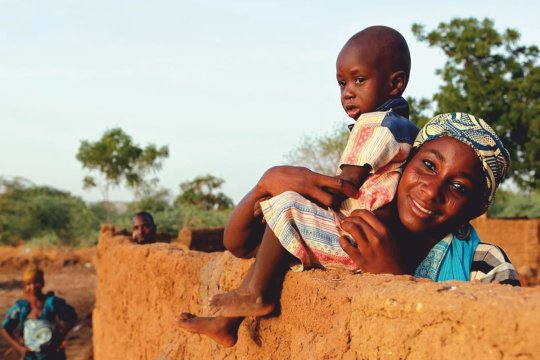
This initiative became more than just an act of giving – it was about seeing the immediate change. The Social Swipe became a bridge between your generosity and the lives it could touch. By turning a passive donation channel into an active experience, Misereor breathed new life into the fight against poverty, proving that even a single euro, empowered by the right idea, could have a world-altering impact.
Results and Effectiveness: A Swipe towards Success
The Social Swipe was a clever idea and a fundraising powerhouse. Within the first month at international airports, these innovative posters featuring a single, impactful image raked in over €3,000 in donations. But the impact went beyond the initial swipe.
Misereor knew the key to lasting change was building a community of dedicated supporters. That’s why it included a clever nudge on credit card statements – a gentle reminder to transform that one-time swipe into a monthly act of compassion. The result was a 23% jump in donors from a single swipe to becoming regular contributors.

The Social Swipe proved that even a small gesture, cleverly presented, could spark a wave of generosity and empower people to become active participants in creating a better world.
An Initiative for Transparency
Misereor prioritizes transparency, understanding the power donors entrust them with. It is committed to responsible, economical, and efficient use of every euro donated and holds itself accountable to individual and public contributors. A multi-layered monitoring system ensures transparency within and outside the organization.
Clear rules and guidelines are established for the organization and its partners. All areas of work undergo regular and consistent monitoring. Internal protocols for staff and managers further prevent any misuse of funds.
The organization’s commitment to maximum transparency extends to the regular publication of data on the source and use of funds. Additionally, external consultants evaluate the effectiveness of development work in Misereor-supported projects, documented annually in a public evaluation report. This allows donors to witness the impact of their generosity firsthand.
Misereor – The Social Swipe, Turning Charity into an Action of Hope
Share Post:
LinkedIn
Twitter
Facebook
Reddit
Source – campaignsoftheworld.com
Original Title: Das PlaCard
Year: 2015
Award: World Summit Award
Category: Inclusion & Empowerment
Organisation: Misereor
Country: Germany
Imagine a world where the most vulnerable – the poor, the sick, the hungry – have someone in their corner. That’s where Misereor steps in, seeing past differences in gender, religion, or nationality.
Its mission is pure and simple—empowerment. The organization believes everyone deserves a life of dignity, and they walk alongside those struggling to achieve it.
The name, “Misereor” (Latin for “I have compassion on the crowd”), comes straight from the Bible, echoing Jesus’ words in Mark 8:2. This compassion is the fuel that drives its every action.
Misereor’s name reflects its core value of compassion. It’s the fire that fuels its fight for a more just and equitable world where everyone has the chance to thrive.
The Swipe of Hope
Source – www.dandad.org
Imagine a billboard that doesn’t just beg but lets you be the hero. This wasn’t your average advertisement. It was the world’s first to accept credit card donations, making giving as easy as a swipe.
Here’s how “The Social Swipe” worked:
Swipe for Change:
You saw a heartbreaking image – a child’s bound hands or perhaps a loaf of bread representing a family’s daily meal in Peru.
The Power is in Your Swipe:
With a simple swipe of your card, you could literally “cut through” the problem, donating €2 to the Misereor.
Instant Impact:
The display instantly showed the difference your donation made.

But the magic didn’t stop there. Your bank statement would later ask if you wanted to turn your swipe of hope into a lasting change, allowing you to become a regular donor.
This innovative approach bypassed the passive donation box and made giving personal, rewarding, and sustainable. It was charity transformed into action, one swipe at a time.
The Power of a Swipe
A billboard that’s not just shouting at you but reaching out for your help. Misereor, a global champion against poverty since 1958, knew the fight for justice needed a fresh approach. People were bombarded with donation pleas, and that spark of inspiration often faded.
But what if a single swipe could make a real difference?
Enter the Social Swipe: a revolutionary poster transforming into an interactive experience. With a simple card swipe, you weren’t just donating but participating in the solution.

This initiative became more than just an act of giving – it was about seeing the immediate change. The Social Swipe became a bridge between your generosity and the lives it could touch. By turning a passive donation channel into an active experience, Misereor breathed new life into the fight against poverty, proving that even a single euro, empowered by the right idea, could have a world-altering impact.
Results and Effectiveness: A Swipe towards Success
The Social Swipe was a clever idea and a fundraising powerhouse. Within the first month at international airports, these innovative posters featuring a single, impactful image raked in over €3,000 in donations. But the impact went beyond the initial swipe.
Misereor knew the key to lasting change was building a community of dedicated supporters. That’s why it included a clever nudge on credit card statements – a gentle reminder to transform that one-time swipe into a monthly act of compassion. The result was a 23% jump in donors from a single swipe to becoming regular contributors.

The Social Swipe proved that even a small gesture, cleverly presented, could spark a wave of generosity and empower people to become active participants in creating a better world.
An Initiative for Transparency
Misereor prioritizes transparency, understanding the power donors entrust them with. It is committed to responsible, economical, and efficient use of every euro donated and holds itself accountable to individual and public contributors. A multi-layered monitoring system ensures transparency within and outside the organization.
Clear rules and guidelines are established for the organization and its partners. All areas of work undergo regular and consistent monitoring. Internal protocols for staff and managers further prevent any misuse of funds.
The organization’s commitment to maximum transparency extends to the regular publication of data on the source and use of funds. Additionally, external consultants evaluate the effectiveness of development work in Misereor-supported projects, documented annually in a public evaluation report. This allows donors to witness the impact of their generosity firsthand.
0 notes
Text
La multinacional Bayer y las violaciones de derechos humanos en Sudamérica
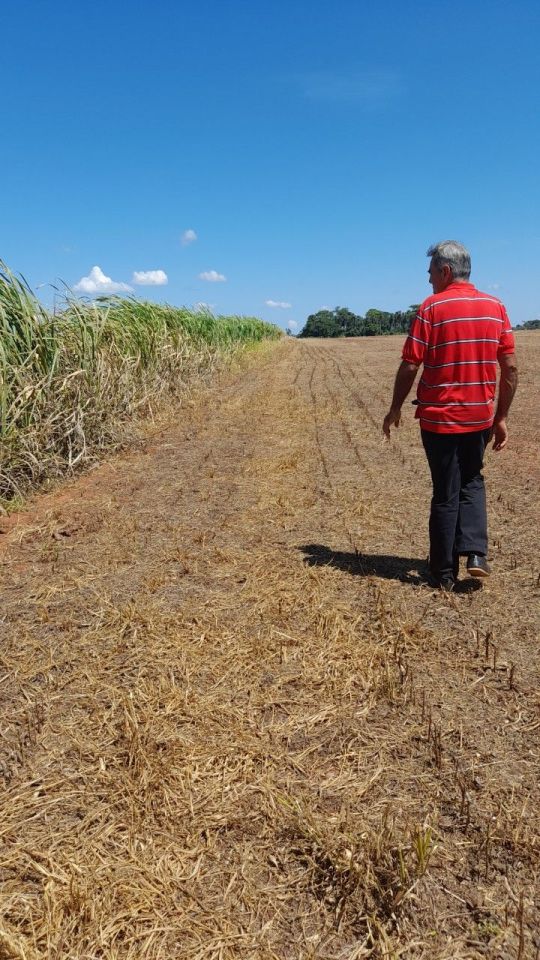
La empresa fue denunciada en Alemania por afectar derechos básicos de poblaciones de Argentina, Brasil, Bolivia y Paraguay. Desalojos de campesinos e indígenas, afectaciones en la salud, desmontes y contaminación de aguas son algunas de las consecuencias de los agrotóxicos y transgénicos que comercializa la compañía europea. Organizaciones sociales denunciaron a la empresa Bayer/Monsanto por vulnerar derechos humanos en Argentina, Brasil, Paraguay y Bolivia a través de la soja transgénica y de agroquímicos elaborados con glifosato. Se trata de una presentación realizada ante la Organización para la Cooperación y el Desarrollo Económico (OCDE) por el Centro de Estudios Legales y Sociales (Argentina), Terra de Direitos (Brasil), BASE-IS (Paraguay), Fundación Tierra (Bolivia), Misereor (Alemania) y el Centro Europeo de Derechos Constitucionales y Humanos. La acción busca mostrar los múltiples modos en que la multinacional afecta derechos con sus productos y que tome medidas al respecto. La OCDE tiene un plazo de tres meses para decidir si admite la denuncia. En un comunicado conjunto, las organizaciones afirmaron: “A partir de la presentación de casos específicos de Argentina, Brasil, Paraguay y Bolivia queremos demostrar la violación de los derechos humanos a la salud, a la alimentación, al agua, al medio ambiente, a la vivienda, a la tierra y/o territorio y a los derechos de los pueblos indígenas y comunidades campesinas”. El caso argentino remite a la denuncia realizada por una familia en Pergamino por afectación de la salud como consecuencia de la exposición a fumigaciones con glifosato. Luna Miguens, directora del equipo de Tierra, Vivienda y Justicia Económica del Centro de Estudios Legales y Sociales (CELS), explicó: “Se presentó un caso regional y colectivo porque la empresa tiene patrones de conductas y políticas empresariales que se repiten en los distintos países del Cono Sur e implican distintas violaciones a los derechos humanos“. Al respecto, añadió: “Nos interesaba poder mostrar que el avance del monocultivo de la soja, la deforestación, las enfermedades asociadas a la exposición a agroquímicos, a fumigaciones, la contaminación del agua, los conflictos por la tierra son todas afectaciones asociadas al avance de la agricultura industrial y no es un problema de cada país, sino un tema regional“. La denuncia fue presentada en Alemania, donde Bayer tiene radicada su casa matriz, encargada de generar las políticas y prácticas de protección de los derechos humanos y el ambiente. En ese país, la Ley de Suministros obliga a las empresas a identificar los riesgos de abusos de los derechos humanos y en el ambiente en la actividad de sus proveedores. Si bien esa norma se ocupa de la fase de fabricación y no de distribución y uso de los productos, organismos como la OCDE sí incluyen la fase de uso al reclamar que las empresas presenten políticas de debida diligencia en materia ambiental. Sarah Schneider, experta en agricultura y nutrición de Misereor, destacó: “Para nosotros es importante resaltar que Bayer está involucrada en todos los pasos de la cadena, en la producción y también en la distribución de semillas y glifosato a través de la propiedad de empresas como Monsoy en Brasil o mediante acuerdos de licencia comercial con criadores, distribuidores o usuarios finales. Es muy importante demostrar en Alemania que Bayer sí tiene una fuerte influencia sobre esa parte de la cadena de valor“. Si la OCDE hace lugar a la presentación, la siguiente instancia será una mediación entre las organizaciones y la empresa para llegar a un acuerdo. Si no es posible, el punto de contacto de Alemania en la OCDE publicará una declaración final explicando las cuestiones planteadas, las razones por las que no se llegó a un acuerdo y podrá hacer recomendaciones a la empresa para la aplicación de líneas directrices. Otra denuncia de este tipo se registró en 2016 en Suiza, contra Syngenta. Sin embargo, aquella se realizó aludiendo sólo al impacto en la salud por un caso en India. La presentación contra Bayer, en cambio, muestra consecuencias múltiples y generalizadas del accionar de la empresa.

“El objetivo es que Bayer elabore políticas ambientales, como incluir un análisis del riesgo de la soja contemplando los altos niveles de conflictividad, la criminalización de las comunidades o de los activistas defensores de derechos humanos y los impactos en la salud de las comunidades que viven al lado de los cultivos“, puntualizó Schneider. “Por ejemplo, que en los etiquetados, en la forma en que vende sus productos o en los requisitos que exige a sus distribuidores, pueda asegurarse de que se respeten las distancias mínimas de aplicación“, completó. Las organizaciones denunciantes destacan que en Alemania existen casos pendientes en las cortes que demandan la suspensión del registro de productos con glifosato. Y que, además, el Gobierno alemán prometió regular mejor esa sustancia activa. Por otro lado, el uso de soja transgénica no está permitido en ese país. “Vemos entonces una actitud de actores políticos europeos que están operando con estándares dobles. Productos ya prohibidos en la Unión Europea todavía se producen y se venden en países en América Latina con consecuencias negativas ya documentadas y previsibles para el futuro”, advierten. Cuatro países envenenados por Bayer/Monsanto En 1996, Argentina autorizó, por primera vez, el uso de un evento transgénico, la "soja RR", desarrollada por la empresa Monsanto, posteriormente adquirida por Bayer. Dos años después, el mismo evento transgénico se registró en Brasil. En 2001, se aprobó en Paraguay y, en 2005, en Bolivia. En la actualidad, los cuatro países se encuentran entre los diez mayores productores de soja del mundo. Más del 60 por ciento de sus tierras agrícolas se destinan a este cultivo. Además, el 90 por ciento de la soja cultivada en ellos es transgénica. Estos índices de producción tienen un impacto socioambiental y sociosanitario. Entre 2001 y 2015, la soja avanzó sobre casi cuatro millones de hectáreas de bosque (deforestación directa) y tuvo un impacto indirecto otras cuatro millones de hectáreas (deforestación indirecta) en la región. La expansión agrícola ha puesto en peligro a biomas como El Cerrado, la Amazonia y la Mata Atlántica, que contienen una de las mayores biodiversidades de la Tierra. En Bolivia el uso de agroquímicos se triplicó desde 1999. En 2017, Paraguay fue el importador del 6,4 por ciento del total mundial de agrotóxicos y casi la mitad de esas importaciones correspondieron a glifosato. Por su parte, Brasil vio incrementado uso del glifosato: triplicó su volumen entre 2000 y 2010. Y en Argentina, este insumo considerado potencialmente cancerígeno, se multiplicó por siete entre 1997 y 2017. Las organizaciones denunciantes informaron además que la falta de respeto de los límites legales de fumigación, y la mala gestión de los envases químicos que los transportan, generan filtraciones directas en el suelo y en los pozos de agua de uso comunitario. En la ciudad bonaerense de Pergamino dos estudios detectaron la presencia de agroquímicos en el agua y concluyeron que tomar esa agua, usarla para cocinar o para bañarse significaba un riesgo muy grande para la salud. En esa localidad, las fumigaciones indiscriminadas generaron además alergias y afecciones respiratorias, presencia de quistes en los huesos, ganglios agrandados, entre otras afecciones. Los estudios médicos confirman la relación entre estos problemas de salud y la exposición a plaguicidas. En Bolivia, los pequeños productores de soja describen que con frecuencia los envases de glifosato se dejan abandonados en los campos de cultivo. Cuando llueve, los envases mal desechados se mezclan con el agua de lluvia y de los ríos. En la comunidad de Portoncito, algunos de sus miembros son contratados como fumigadores pero no se les brinda ningún tipo de medida de seguridad. Durante los últimos dos años han sentido dolores de cabeza y diarrea después de las fumigaciones. En la localidad de San José, el centro de salud local informó que se incrementaron las consultas por enfermedades diarreicas, vómitos y picazón en el cuerpo en temporada de fumigación. En Brasil, un estudio de 2022 citado por las organizaciones, concluyó que en los 127 municipios del Estado de Paraná los niveles de glifosato/AMPA detectados superaban los límites permitidos en ese país. La comunidad indígena Okoy relata que las lluvias arrastran a los agroquímicos a los lagos donde pescan y donde los niños se bañan durante el verano. Después de beber y bañarse, las personas informaron síntomas como dolor de estómago, vómitos, picores, llagas, diarrea y hasta fiebre. En Colonia Yeruti (Paraguay) los pobladores reportaron que después de las fumigaciones la gente experimenta dolor de cabeza, picazón en la nariz, diarrea y vómito. Dos pobladores relatan que 21 miembros sufrieron intoxicaciones graves. En 2019, el Estado Paraguayo fue condenado por el Comité de Derechos Humanos de las Naciones Unidas por la muerte de Rubén Portillo, una de las personas intoxicadas. Un modelo de producción que pone en jaque los alimentos y la tierra La tierra es el recurso más importante para el cultivo intensivo de soja. Como consecuencia, las comunidades rurales sufren desalojos ilegales, ataques armados, envenenamiento por fumigaciones intensivas o ilegales y criminalización por parte de los productores de soja. En Argentina, por ejemplo, los productores rurales han sido acusados de denuncias penales por fumigaciones infligiendo amenazas, daños y hostigamiento contra las víctimas de las fumigaciones. En Brasil, el Pueblo Avá Guaraní han presenciado incluso la fumigación como arma química. Es decir, la fumigación intencional de aldeas para alcanzar casas, campos y a los propios indígenas. También hay un gran impacto en la cuestión de la soberanía alimentaria. Un aspecto central es la destrucción de cultivos –incluidos los de subsistencia– que no utilizan pesticidas ni semillas transgénicas. Las intensas fumigaciones aéreas y terrestres con glifosato en zonas vecinas destruyen los cultivos de subsistencia de las comunidades cercanas, limitando aún más su acceso a los alimentos. También hay registros de muertes de animales, como pollos y peces. En Bolivia, el cultivo de la soja genéticamente modificada ocupa el 50 por ciento de las tierras cultivadas de Santa Cruz, el departamento que concentra siete de cada diez hectáreas de tierras agrícolas del país. Durante la última década (2011-2022), se deforestaron cerca de 436 mil hectáreas de bosque directamente para cultivos de soja. En esa zona, 256 aldeas habitadas por familias campesinas, migrantes rurales e indígenas ven afectada su seguridad y soberanía alimentaria por la desaparición de los sistemas agrícolas tradicionales indígenas. La Colonia Yeruti de Paraguay cuenta con 2.212 hectáreas trabajadas por pequeños productores para la producción de rubros de autoconsumo y el arraigo. En la actualidad, los cultivos mecanizados avanzaron en un 60 por ciento sobre el área de la colonia, a expensas de las familias campesinas que habitan en el lugar. Las mismas se vieron limitadas a vivir en unas pocas hectáreas de tierra, rodeadas por grandes extensiones de soja, donde se realizan constantes fumigaciones con pesticidas. Paraná es el segundo estado productor de soja de Brasil. Allí, las aldeas Avá Guaraní reportaron la desaparición de especies silvestres de aves, abejas, mariposas, animales cazadores y peces en los ríos. También señalaron problemas de salud y la pérdida de capacidad de producción de alimentos por aguas y ríos contaminados. :::Mariángeles Guerrero (Agencia Tierra Viva)::: Read the full article
1 note
·
View note
Text
Week 12 Compulsory Question 2

I wrote down my artistic vision based on my experience and my strength. My design strength is illustration because I enjoy drawing out and generating ideas for school assignments or personal projects. It's a fun task because I can express my feelings through the artwork. It's also an excellent way to improve my illustration work, as the more I do, the better I get.

For example, in studio class, we are supposed to make merchandise based on our festivals. I have chosen the Singapore Food Festival, and since I wanted it to be comic-style, I decided to add Ricecon because our festival will feature rice as the main course, and I wanted to add superheroes. I also added the details that could elevate the merchandise even more.
In 5 years, I wanted to become a Graphic designer or Illustrator. I've dreamed of becoming an illustrator since I was younger because I enjoyed observing other artists' work growing up. There are several artists that I still look up to today, like Miyazaki Hayao and Li Hongbo.

Li Hongbo's artworks inspire me to be able to challenge myself even further by pushing all my potential in design. His famous work is creating sculptures from paper, which encourages me to utilize other materials to create a better design.

During my image and materiality, one of the assignments was to make use of different types of materials for the two combined words. My combined words were a delicious garden, so I used gummy worms to create the words. I enjoy the work process as it's less hectic and stressful than my other projects.
Given the time I have for now, I would like to explore, expand, and experiment with my artwork by using different design mediums. I will also ask my lecturers more about design and art, in general, to gather more knowledge and use that to improve my work. Receiving opinions and feedback is the most important thing, especially from art professionals or your lecturers, because they are more experienced in design.

I researched social engagement for the class activity and wanted to discuss this campaign. What really caught my eye was called the social swipe. The social swipe is a great example of introducing a new creative way for people to donate to end world hunger. In my opinion, I believe that contributing to even something small like this could help the community to grow and be even better.
Looking back at my artistic vision, CTS B has taught me about becoming more empathetic and understanding designs more. I have done much CTS design research and enjoy learning more about them. CTS has made me realize that collaborating and communicating in a group isn't easy; however, it's important and helps you be more self-aware.
(Word Count: 462)
References:
“Li Hongbo.” Eli Klein Gallery, www.galleryek.com/artists/li-hongbo. Accessed 14 Nov. 2023.
Dio. “The Social Swipe - Experiential Marketing Campaign.” Dio USA Experiential Marketing Agency, 5 Sept. 2018, diousa.com/blog/experience-of-the-week-donation-billboard/#:~:text=Misereor%2C%20a%20nonprofit%20dedicated%20to,simultaneously%20made%20a%20small%20donation.
“The Social Swipe.” The Social Swipe | Kolle Rebbe | Bischoefliches Hilfswerk MISEREOR e.V. | D&AD Awards 2015 Pencil Winner | Innovative Use of Technology | D&AD, www.dandad.org/awards/professional/2015/digital-marketing/24290/the-social-swipe/. Accessed 15 Nov. 2023.
1 note
·
View note
Text
Quẹt thẻ không chỉ để mua sắm mà còn dành cho quyên góp
Khi cuộc sống của con người đang ngày một trở nên tốt hơn, họ bắt đầu quan tâm tới việc giúp đỡ những mảnh đời khó khăn khác xung quanh mình bằng cách tham gia trực tiếp hoặc gián tiếp vào những hoạt động từ thiện và các phong trào gây quỹ. Song, nhiều phong trào gây quỹ hiện vẫn chưa nhận được sự quan tâm như mong đợi nên việc gây quỹ cũng gặp nhiều khó khăn hơn khi chưa được biết đến rộng rãi. Từ đó, các chiến dịch gây quỹ cho tới thời điểm hiện tại đang sử dụng nhiều cách thức độc lạ để thu hút sự quan tâm của các cá nhân và tổ chức. Chúng ta hãy cùng tìm hiểu về một chiến dịch gây quỹ đã từng gây sốt trên khắp các mạng xã hội có tên là “The Social Swipe" với mô hình gây quỹ vô cùng độc đáo.
Giới thiệu chiến dịch
Chiến dịch The Social Swipe là sự kết hợp của công ty quảng cáo Kolle Rebbe (Đức) và tổ chức từ thiện Misereor (Relief Organization Misereor) nhằm quyên góp giúp đỡ những người nghèo ở các quốc gia đang phát triển. Vào năm 2013, chiến dịch bắt đầu được thực hiện và từng đoạt giải Vàng dành cho quảng cáo ngoài trời (‘Outdoor’ Gold Winners) tại liên hoan Cannes Lions 2014 nhờ vào việc sử dụng công nghệ hiện đại để tạo nên một bảng quảng cáo tương tác giữa người quyên góp và tổ chức từ thiện. Đây là một hình thức quyên góp mới lạ, thu hút được sự quan tâm của nhiều người khi bảng quảng cáo được tích hợp chung với công cụ quyên góp (interactive donate poster).
Cách thức quyên góp
Thông qua việc khơi dậy lòng trắc ẩn và sự tò mò của con người, tổ chức đã cho trình chiếu những hình ảnh tương phản thu hút người xem như đứa trẻ với bàn tay bị trói hay ổ bánh mì đang trực chờ được cắt lát… kèm theo lời kêu gọi “Free them!” và "Feed them!". Khi người quyên góp sử dụng thẻ Credit card để cà qua rãnh của tấm bảng, ngay lập tức hình ảnh động được kích hoạt: dây trói của đứa bé sẽ được cắt đứt và ổ bánh mì sẽ được cắt lát. Chỉ bằng một câu kêu gọi ngắn gọn cùng những hình ảnh độc đáo, tấm bảng quảng cáo đã khiến nhiều người xem phải dừng chân bởi sự tò mò và tham gia quyên góp cho hoạt động từ thiện này. Với mỗi lần quẹt thẻ qua tấm bảng, “phép màu” mà họ muốn gửi gắm sẽ tương đương với 2 euro quyên góp cho quỹ từ thiện để phân phát đồ ăn miễn phí tới các gia đình nghèo đói hoặc trả tự do cho các trẻ em bị giam cầm.
Thông điệp chiến dịch
Chiến dịch “The Social Swipe" đã tác động trực tiếp đến nhận thức và suy nghĩ của người xem bằng cách sử dụng một phương thức gây quỹ hoàn toàn mới lạ. Với những thông điệp rõ ràng và nhân văn được trình bày trên bảng quảng cáo, tổ chức mong muốn mọi người cùng chung tay giúp đỡ những hoàn cảnh khó khăn thông qua chỉ một lần quẹt thẻ. Với mỗi một lần quẹt thẻ, người tham gia quyên góp đang góp phần giúp đỡ những đứa trẻ thoát khỏi sự giam cầm hay mang đến cho những người nghèo khó một bữa ăn giống với những gì được thể hiện trên bảng quảng cáo.
Kết quả chiến dịch
Chỉ tính trong năm 2013, dựa vào việc kết nối sinh động của công nghệ trong việc quyên góp từ thiện, tổ chức đã thu về hơn 40% số tiền quyên góp thông qua hình thức cà thẻ qua bảng quảng cáo. Thay vì việc phải di chuyển và quyên góp trực tiếp, hình thức gây quỹ này có thể hỗ trợ các cá nhân quyên góp bằng cách nhanh nhất và hiệu quả nhất. Đây là một chiến dịch từ thiện vô cùng sáng tạo và thành công ngoài sức tưởng tượng khi việc quyên tặng tiền chưa bao giờ gần gũi và dễ dàng đến vậy chỉ với một lần quẹt thẻ đơn giản.
Bên cạnh đó, những người quyên góp tại billboard sẽ nhận được hóa đơn tín dụng đặc biệt, trong đó họ nhận được thêm một lời cảm ơn, và được mời quyên góp định kỳ chỉ bằng một lệnh yêu cầu gửi đến ngân hàng. Bước đi thông minh này sẽ giúp tổ chức từ thiện Misereor tạo được mối quan hệ bền vững với những nhà hảo tâm ủng hộ họ mà không gây phiền hà khi liên tục quay lại mời quyên góp một cách bị động. Trong thực tế, The Social Swipe đã tăng số lượng người quyên góp hằng năm cho tổ chức này thêm 23%.


1 note
·
View note
Photo
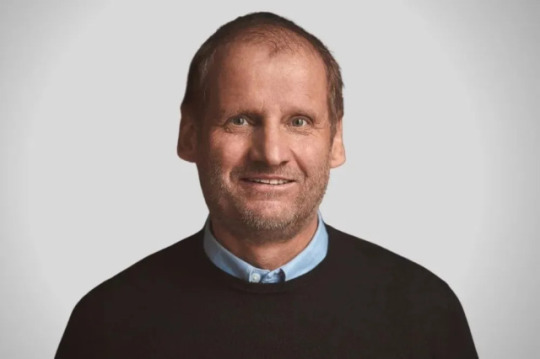
Misereor stellt Jahresbilanz vor: 61,7 Millionen Euro an Spenden und Kollekten ➡️ https://de.catholicnewsagency.com/news/13879/misereor-stellt-jahresbilanz-vor-617-millionen-euro-an-spenden-und-kollekten
0 notes
Photo

On 6 August, Prof Thomas Auer, will provide insight into his work on building technology and climate responsive design as part of the Master Classes organised by the global Building Sense Now initiative and Misereor. In addition to the keynote lecture, there will be space for questions. The event is free of charge.
Register here >
DGNB supports the initiative Building Sense Now
11 notes
·
View notes
Text
Misereor-Fastenbier: Nachhaltiger Genuss für den guten Zweck Ab Aschermittwoch ist das alkoholfreie Bier von Neumarkter Lammsbräu bei teilnehmenden Bioläden und gut sortierten Getränkefachmärkten erhältlich Auch in diesem Jahr gibt es während der Fastenzeit wieder das alkoholfreie Misereor-Fastenbier im Biohandel zu kaufen. Die Bio- Brauerei Neumarkter Lammsbräu hat dieses Bier für Misereor entwickelt. Es wird ab Aschermittwoch bis zum Ende der Fastenzeit angeboten. Mit dem Fastenbier greift Misereor eine alte bayerische Tradition auf. Für jede verkaufte Flasche erhält Misereor eine Spende für die Projektarbeit. Gemeinsam bieten das katholische Werk für Entwicklungszusammenarbeit Misereor und der Bio-Pionier Neumarkter Lammsbräu eine alkoholfreie Alternative zum hochprozentigen Starkbier an. In Klöstern hat Fasten eine lange Tradition. Flüssige Nahrung war in der Fastenzeit erlaubt, weshalb findige Mönche auf die Idee kamen, dünnes Bier nahrhafter zu machen. Die Rezepte für das „flüssige Brot“ reichen bis ins frühe Mittelalter zurück, es hat mitunter bis zu 11 Vol.-% Alkohol. Das Misereor-Fastenbier ist die bislang einzig bekannte alkoholfreie Variante des Fastenzeit-Biers. Das Bier ist ideal für alle, die in der Fastenzeit auf Alkohol verzichten wollen. Seit 2018 unterstützt das Familienunternehmen Neumarkter Lammsbräu die Misereor- Fastenaktion mit ihrer Interpretation des Fastenbiers. Seit Jahrzehnten gilt für die Familienbrauerei aus der Oberpfalz der Grundsatz, immer im Einklang mit der Schöpfung das bestmögliche Produkt auf absolut nachhaltige Art und Weise herzustellen. Dazu gehört das Vertrauen auf traditionelle Braukunst ebenso wie der ausschließliche Einsatz hochwertigster Brau-Rohstoffe aus dem ökologischen Landbau: ganze Aromahopfen-Dolden und in der hauseigenen Mälzerei erzeugtes Malz aus Bio-Getreide. Das Misereor-Fastenbier eignet sich hervorragend zum Fastenessen. Zu kaufen gibt es das Bier unter anderem in vielen Filialen von Denns und Alnatura oder im gut sortierten Getränkehandel. Weitere Informationen finden Sie unter: Mitmachangebote der Fastenaktion (misereor.de). https://www.ecopressblog.de/misereor-fastenbier-nachhaltiger-genuss-fuer-den-guten-zweck/?feed_id=396&_unique_id=63f60a7f6ffe7
#Getränke#grüneUnternehmen#Initiativen|Engagements#Mitmachen|SocialActivity#Pressemeldung#alkoholfrei#Fastenbier#Fastenzeit#Lammsbräu#MISEREOR#Tradition
0 notes
Text
Europäische Banken finanzieren umweltschädliche Plastikindustrie weiter
ALMANYALILAR – In den letzten 70 Jahren wurden weltweit um die 8,3 Milliarden Tonnen Plastik hergestellt. Ganze 6,3 Milliarden Tonnen waren Müll – davon wurden nur 9% recycled, 12% verbrannt, und fast 80% des Plastikmülls landeten auf Müllhalden oder in der freien Natur. Trotz dieses dramatischen Problems finanzieren europäische Großbanken weiterhin massiv die Plastikindustrie. Das bemängelte…

View On WordPress
#Brot für die Welt#Der Dirty Profits Bericht#der Friedreich-Ebert-Stiftung#Kindernothilfe#Misereor#Schwedischen Entwicklungshilfeorganisation SIDA
0 notes
Text
Te leemos las noticias aquí Este trabajo fue posible gracias a los aportes de la Agencia Sueca de Cooperación para el Desarrollo Internacional (Sida) a través de la Sociedad Sueca para la Conservación de la Naturaleza (SSNC); la organización suiza HEKS/EPER; Misereor/KZE, de Alemania; la Fundación Swift, de Estados Unidos; y Grassroots International. Las opiniones aquí expresadas son el resultado de información obtenida de diversas fuentes a las que tuvo acceso el WRM y no reflejan necesariamente las opiniones oficiales de los contribuyentes o sus financiadores. El negocio de la compensación de emisiones de carbono ha demostrado ser un mecanismo muy eficaz para que las empresas se beneficien del caos climático, ya sea directamente –mediante la venta de créditos de carbono– o indirectamente – permitiendo que las empresas continúen con sus actividades basadas en combustibles fósiles. En la prisa por expandir este negocio, los proyectos de plantación de árboles han atraído a un número creciente de buscadores de ganancias, como los especuladores, consultores del carbono, empresas forestales y compañías petroleras. El resultado ha sido que las plantaciones de árboles destinadas a compensar emisiones de carbono plantean ahora amenazas cada vez mayores para las comunidades que dependen dela tierra. Después de un impulso inicial alrededor de la década de 2000, presenciamos ahora una nueva ronda de iniciativas de plantacionesde árboles para el mercado de carbono. En los últimos tres años, el número de proyectos de plantaciones para mercados voluntarios de carbono ha aumentado más del doble. Estos proyectos no sólo crecieron en número sino también en escala. Los desarrolladores afirman que sus proyectos de plantación de árboles tienen uno de los índices promedio más altos de absorción/reducción de emisiones en comparación con otros tipos de proyectos. 👉Plantaciones_de_arboles_par…(7,52 MB
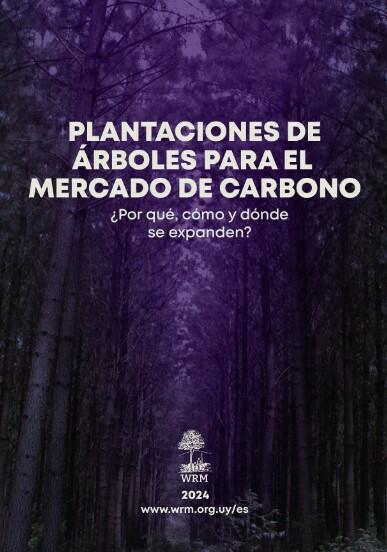
View On WordPress
0 notes
Text
Fragwürdiges Geschäft auf Kosten der Gesundheit
Fragwürdiges Geschäft auf Kosten der Gesundheit

Studie deckt auf: Bayer und BASF vertreiben in Südafrika und Brasilien Pestizide, die in der EU nicht genehmigt sind
[Aachen/Berlin/Johannesburg, 23. April 2020] – Die deutschen Konzerne Bayer und BASF sind mitverantwortlich für Pestizidvergiftungen bei Landarbeiter*innen in Südafrika und indigenen Gruppen in Brasilien. Zu diesem Ergebnis kommt eine Studie, die die Rosa-Luxemburg-Stiftung,…
View On WordPress
#Agrar#Agrarfabriken#Agrarkonzerne#Agrarlobby#Agrarpolitik#BASF#Bayer#Bayer AG#Brasilien#Chemieindustrie#Eine Welt#EU#Europäische Union#INKOTA#Misereor#Südafrika
0 notes
Photo


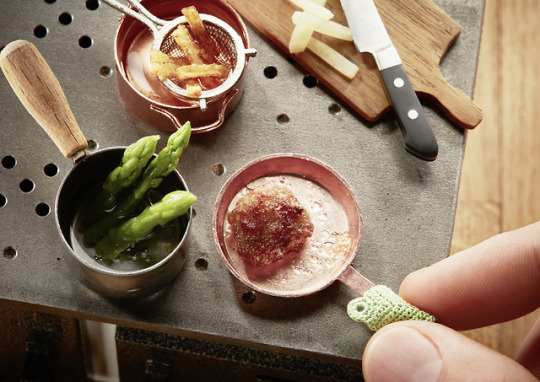


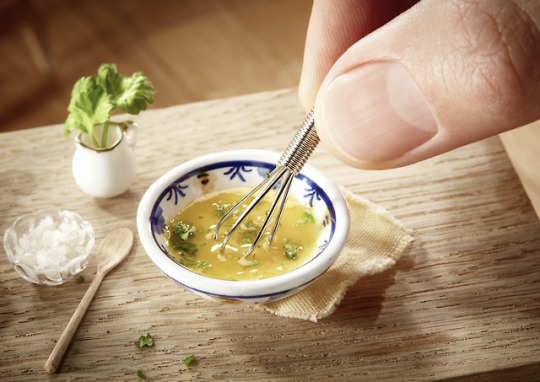
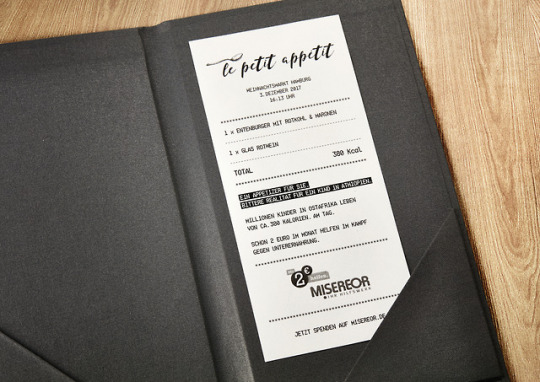
youtube
Misereor Fighting hunger with Haute Cuisine: the Misereor Micro Meals.
0 notes
Text
"Merci" and "mercy" share the same root with the word "market". Other words in this family are "merchant", "mercenary", "Mercury", "merchandise".
From merx (genitive mercis) - "wares, merchandise." This is from an Italic root *merk-, possibly from Etruscan, referring to various aspects of economics.
The god Mercurius was probably the god of exchange. According to [Walde-Hoffmann], the god's name was borrowed from Etruscan; in principle, the same is possible for the stem *merk-altogether. [de Vaan]
In Church Latin (6c.) it was given a specific application to the heavenly reward earned by those who show kindness to the helpless and those from whom no requital can be expected.
In the Latin Vulgate Bible, created in the late 4th-century, Matthew 5:7 is:
"beati misericordes quia ipsi misericordiam consequentur."
Misericordes is from miseria "misery, distress, woe, wretchedness, suffering," hence the verb misereor "to pity (the miserable)" -- but already, in Vulgar Latin, mercedem "reward, pay" and miseria had become somewhat intermingled, as mercedem came to mean "favor or pity." Alms to a beggar, for instance, is both payment and pity.
As conversion to Christianity spread north from Rome in the 5th- and 6th-centuries, missionaries speaking Vulgar Latin used mercedem to mean "reward, a bargain, or a blessing." This usage became accepted in Gaul and elsewhere, where for centuries the Classical Latin term for wages, merchandise, and trade had been resisted as representing everything that was despised about the occupiers. (The Old French began using the word to express appreciation, shortening it to mercit, hence merci.)
Mercy was brought into English by way of medieval French, where it referred to clemency against one who has offended, and our earliest English use is in a 13th-century homily: “Lord, have mercy on us.” The French adapted the word from the Latin merx, which means “merchandise” and was used in the very early Middle Ages to refer to a price paid for something, usually labor. So when mercy appeared in English, it still had overtones of payment for something. You could make a theological meal of that, of course, and plenty of early use does. Most of the earliest uses of mercy are as a petition for God’s mercy on a sinner’s soul.
The “compassion for an offender” meaning is one of the earliest meanings, and very specific. Mercy in those uses was tied to the idea of wiping out a debt, invalidating a crime, restoring to health or wholeness or society. It assumed that the object of mercy was not deserving of compassion, that the party showing mercy was literally bearing the cost of the crime or debt on themselves.
Of course, the biggest uses of mercy in that sense were petitions to God for mercy, for a removal of justified judgment and punishment. The “compassion towards the unfortunate” sense was a natural extension of that. As the church is meant to be Christ incarnate to a broken world, so we bring Christ’s compassion to those who are suffering. This English use traces back almost directly to Mt 25:35-37, in which Jesus explains how the Father will separate out the sheep from the goats. A 14th-century laypersons’ catechism explains that it behooves the Christian to do these “seuen deds of merci” (seven deeds of mercy) laid out by Jesus in this passage, which is what gave rise to the seven corporal works of mercy in the medieval church. With this, the orientation of the word mercy shifted away from compassion for the offender to compassion toward all in need.
6 notes
·
View notes